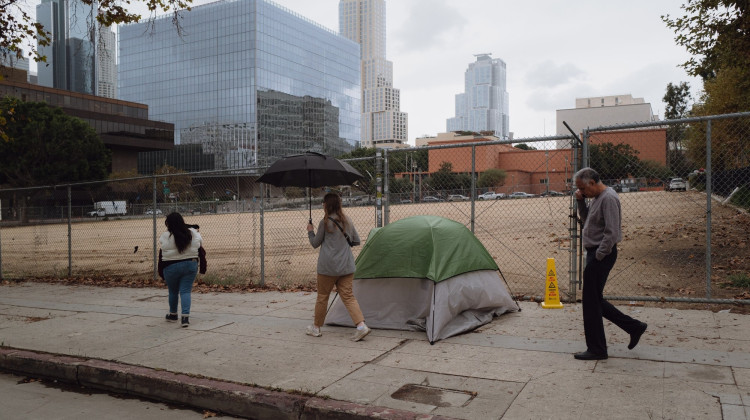A Chicago brain researcher is working at the intersection of art and neuroscience. Dr. Lukasz Konopka is offering hope and new insight for those suffering PTSD and depression.
While working at the Chicago VA years ago, Dr. Konopka was approached by an Art Institute student wanting to use science to study the impact of art therapy. That encounter set Konopka’s career on a new course.
“At that time, I did not know what art therapy was nor did I have a appreciation for that process. And as a consequence of that relationship I became very aware that in addition to standard therapeutic processes that we engage in in the clinic – there are other ways to reach the patient from basically subconscious.”
Konopka says psychic traumas – like what many of our Veterans are dealing with – don’t just go away. They can be locked away from the conscious mind – but still cause issues like PTSD and depression.
“We as adults learn how to incorporate these traumatic experiences and allow them to be unprocessed – but they are retained. There is no trauma that becomes eliminated from ones brain. Once experienced, it will always be present.”
Konopka says the right hemisphere of the brain deals with emotions and the left allows us to communicate. If there is a disconnect between the two hemispheres – those emotions often don’t get expressed. That, Konopka says, is where art therapy comes in.
“So art therapy is primarily involved that process where individuals express themselves by painting drawing. There are other forms, for example clay – that provides a very different experience to the patient because they actually manipulate something in a 3-dimensional space.”
An Iraq war Army veteran, only identified as Grambi, participated in a pilot art therapy project at the Indianapolis VA hospital to deal with PTSD. He says the act of creating a piece of art during therapy and then being able to put words to it is meaningful.
“Sometimes I can share it with the group or sometimes I can share it even outside the art therapy. Sometimes I might share it with a friend or a family member or someone else. And then some other things that I just keep private, you know, that I just kinda do for myself. But, it is cathartic – it it’s a release.”
And what is it about sharing with other veterans?
Grambi says, “It’s vital. ‘Cause we’re a unique breed.”
“Shared experience is something that we all seek,” said Konopka. “So when someone finds themselves in trouble – in distress – the sense of loneliness and being alone is always so very prominent. By having a conversation with others who have similar experiences allow us to feel that we are not unique or crazy or abnormal.”
It is not only the fine arts that help veterans heal. The expressive arts - music and theatre – can allow feelings to be communicated.
“Patients participating in theatre, where they can take on someone else’s identity and express their emotions – may be very therapeutic because it’s not about them – and yet it is about them.”
Konopka says he’s absolutely convinced of art therapy’s healing potential for those with hidden wounds.
 DONATE
DONATE






 View More Articles
View More Articles


 Support WFYI. We can't do it without you.
Support WFYI. We can't do it without you.